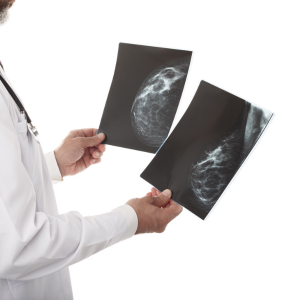ERCP

Endoscopic retrograde cholangiopancreatography (ERCP) is a medical procedure that uses an endoscope (a flexible tube with a light and camera on the end) and X-rays to visualize, diagnose and treat problems in the bile ducts and pancreas.
During an ERCP procedure, the endoscope is inserted through the mouth and into the upper digestive tract. The doctor then passes a small catheter through the endoscope and into the bile ducts and pancreas. Dye is injected through the catheter and an X-ray is taken to visualize the bile duct and pancreas ducts. The doctor can then diagnose and treat any problems that are found, such as blockages, stones or infections.
An ERCP is usually performed under general anesthesia, meaning the patient is completely asleep and monitored by an anesthesia provider. An ERCP can usually be performed on an outpatient basis, meaning the patient can go home the same day.
Diagnosis
An ERCP is used to diagnose and treat a variety of conditions affecting the bile ducts and pancreas, including gallstones, strictures/blockages, and cancer. If necessary, a stent can be placed to relieve a blockage of the bile duct or pancreas ducts.
Benefits & Risks
It is important to discuss the risks and benefits of ERCP with your doctor before the procedure. Your doctor can help you make an informed decision about whether ERCP is the right choice for you.
Benefits:
- Accurate diagnosis: An ERCP allows the doctor to accurately diagnose and treat a variety of conditions affecting the bile ducts and pancreas, including gallstones, pancreatitis, and cancer.
- Non-invasive: ERCP is a minimally -invasive procedure, meaning that it does not require a surgical incision.
- Treatment options: ERCP can be used to place stents (small tubes) to help drain fluids or to remove stones or other blockages.
- Alternative to surgery: In some cases, ERCP may be used as an alternative to surgery for the diagnosis or treatment of certain conditions affecting the bile ducts and pancreas.
- Quick recovery: Most people are able to return to their normal activities the following day as the procedure, with minimal downtime.
Risks:
- Bleeding.
- Infection.
- Perforation (tear) of the GI tract.
- Reaction to the anesthesia used during the procedure.
- Swelling or inflammation of the pancreas (pancreatitis).
- Some people may experience discomfort during the procedure, such as bloating or abdominal cramping. These symptoms should not be severe. Severe pain could be a sign of a complication, and should be brought to your doctor’s attention right away.
FAQs
ERCP, or endoscopic retrograde cholangiopancreatography, is a medical procedure that combines the use of an endoscope and X-ray technology to visualize and diagnose problems in the bile ducts and pancreas.
During the ERCP procedure, the endoscope is inserted through the mouth and into the digestive tract. The doctor then passes a small tube through the endoscope and into the bile ducts and pancreas. Dye is injected through the tube and an X-ray is taken to visualize the ducts and pancreas. The doctor can then diagnose and treat any problems that are found, such as blockages or infections. ERCP is usually done under conscious sedation, which means the patient is awake but relaxed and may not remember much of the procedure.
There are risks associated with ERCP, including bleeding or infection at the site where the endoscope was inserted, perforation (tear) of the bile ducts or pancreas, and reactions to the sedative used during the procedure. There is also a risk of swelling or inflammation of the bile ducts or pancreas.
The benefits of ERCP include the ability to accurately diagnose and treat a variety of conditions affecting the bile ducts and pancreas, the ability to serve as an alternative to surgery for the diagnosis or treatment of certain conditions, and the ability to place stents (small tubes) to help drain fluids or remove stones or other blockages.
The length of the ERCP procedure will vary depending on the individual and the specific reasons for the procedure. In general, the procedure takes about 30-60 minutes to complete.
Most people do not experience pain from an ERCP. While some discomfort can occur afterwards, it should not be severe. Severe pain should be brought to your doctor’s attention promptly.
After the ERCP procedure, you may feel a little groggy or have a sore throat for a day or two. You should be able to eat and drink normally after the procedure, although you may be advised to avoid certain foods or activities until any discomfort subsides. It is important to follow the instructions of your medical team and report any concerns or problems to them.